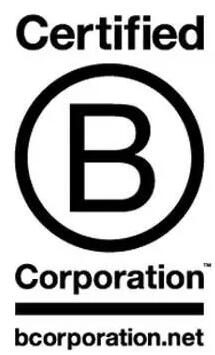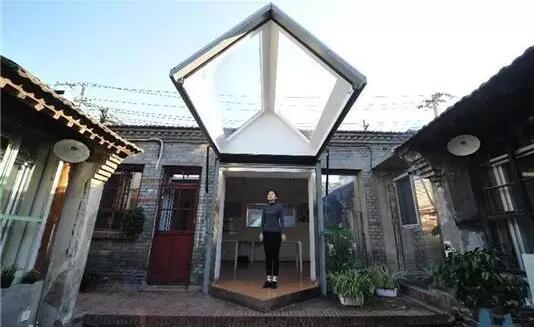Author: Li Yulin, Lan Guangyu
If we think profit-oriented business is a problem, what is the solution?
Some are of the opinion believe that business should first do whatever it can to make profits, then focus on charity. . Others think that we can do both simultaneously by directly promoting business to do good.
"Mutual-Interest enterprises tell us the best way to pursue profits, not a one-time profit, but a continuous profit,. If we all believe that the idea of corporate propaganda is correct, it will be difficult for people who are not corporate to make money. It not only affects businessmen, but also affects everyone. It may transform our entire business environment through indirect influence.”

▲Zhang Weiying (left) is one of the most topical economists in China
In March 2017, Zhang Weiying, the representative of market economists, talked to an eager audience at an international forum on the theme, "Blurred Territory". . Me.Zhang, the founding director of Leping Public Welfare Foundation, introduced a new business movement which had originated in the United States. He described his vision in China with a very "Zhang Weiying" market thinking: "A Mutual Benefit Enterprise is an idea, we need to innovate, it also needs to be tested through our market operation mechanism."
Among Chinese foundations, Leping Public Welfare Foundation is quite independent. This fund, which is based on Mao Yushi, Wu Jinglian, Zi Zhongyun and other top market-oriented scholars, acts in a low-key manner. It is not well-known in China, but has close ties with European and American intellectuals. It has introduced many advanced concepts. This is the home of Zi Zhongyun, the Enlightenment work of Chinese foundations. The reprint was completed under the operation of the Foundation.

Recently, they have been promoting the idea of "B Corporations" in both mainland China and Hong Kong. It is described as a "good company" that cares about making money and stresses the benefits of the environment and society.
This kind of attempt sounds familiar to us. Yes, 10 years ago, the British "social enterprises" were introduced into the mainland of China, and so did the importers. In recent years, public welfare people used it to solve the problem of difficult registration of public welfare organizations in mainland China at that time, without stable funds, and walked out of a road of social enterprises with Chinese characteristics.
In today's "blurred territory" forum, many audiences are wondering : What is the difference between the common benefit enterprises and social enterprises? Since they are all for the purpose of opening up the boundaries of public welfare and commerce, why introduce a new concept that sounds similar when social enterprises are still deeply involved in the concept debate?
In the view of Professor Deng Guosheng of Tsinghua University, common benefit enterprises and social enterprises are "not one thing". If the latter is to solve social problems by means of commerce, the former is to solve commercial problems by means of socialization. Although both pay attention to the new types of institutions between public welfare and commerce, which overlap with each other, there are different priorities for a business that is based on social purposes and must be profitable.
More importantly, social enterprises do not have a set of universally recognized standards, often people with different opinions and wise people with different opinions. Common benefit enterprises, like university entrance examinations, have a rigorous certification system, and only when the scores reach the standard, can they enter the classroom.
About 10 years ago, several American entrepreneurs launched a social movement aimed at transforming mainstream businesses. They founded a non-profit organization called "B lab", with the slogan "Business as a force for good", and proposed an evaluation and certification system to become a "good company".

▲The certification mark of the common benefit enterprise. B lab has put forward more than 200 standards of five dimensions, with a full score of 200 points and a score of more than 80 points, which can be certified as a common benefit enterprise.
Their ideas have succeeded in bringing together the consensus of a group of small and medium-sized business owners. Today, more than 2,000 enterprises are willing to label their companies as "common-benefit enterprises", which are located in more than 50 countries and regions.
In 2016, a new business movement arrived in mainland China. By April 2017, there were four compnaies in mainland China and two in Hong Kong. Shen Dongshu, the main importer, is very optimistic about this. He said that in the next five to 10 years, the growth rate and number of common benefit enterprises in China will surpass that in the United States, where they originated, because "our small and medium-sized enterprises urgently need a community that can learn from each other."

▲Shen Dongshu, an Active Introducer of Common Benefit Enterprises
Shen Dongshu, Secretary-General of Leping Public Welfare Foundation, has been the CEO of this public welfare organization founded by economists 15 years ago since its predecessor the Fuping School. Shen Dongshu, born in business circles, advocates using entrepreneurs to solve problems.. In recent years, with Leping Public Welfare Foundation as the axis, he founded a number of social enterprises and created a "Leping System" across the public welfare and business circles.
Like many investors, Shen Dongshu has an unusual interest in "What is next" (the next trend).
According to Shen Dongshu, he has been in contact with Common Benefit Enterprises for several years since 2012. In 2014, he invited Zi Zhongyun, a 84-year-old scholar at that time, to visit the social movement that took place in business circles in the United States. Based on this, he revised Zi Zhongyun's masterpiece The Destination of Wealth (renamed The Responsibility of Wealth), "Common Benefit Enterprise" translation, first seen in Zi Zhongyun's book.
During that period, the Mutual Benefit Enterprise Movement developed rapidly, showing the potential of this new business movement, whether in the global geographical expansion or in the growth of the number of certified enterprises. As of April 2017, 972 corporate interests had gathered in the United States, not for self-entertainment. They promoted local government legislation with the strength of their communities. At present, more than 30 states in the United States have enacted laws and regulations to support common-benefit enterprises.
The business philosophy advocated by corporate interests has been widely welcomed in Europe and the United States: "Not only the interests of shareholders, but also benefit stakeholders, such as employees, communities and the environment." Type B laboratories set a series of public welfare standards for commercial companies. For example, enterprises will increase their scores in buildings that meet the energy-saving certification standards. For example, they will also increase their scores by allowing grass-roots employees to own shares and providing them with the same benefits as the senior employees of enterprises.
The business philosophy advocated by corporate interests has been widely welcomed in Europe and the United States: "Not only the interests of shareholders, but also benefit stakeholders, such as employees, communities and the environment." Type B laboratories set a series of public welfare standards for commercial companies. For example, enterprises will increase their scores in buildings that meet the energy-saving certification standards. For example, they will also increase their scores by allowing grass-roots employees to own shares and providing them with the same benefits as the senior employees of enterprises.
In April this year, Shen Dongshu, as an investor, recommended one of the venture capital companies invested by Leping to pass the certification of the Mutual Benefit Enterprise and become the fourth Mutual Benefit Enterprise in mainland China. Shen Dongshu said: "Becoming a common-benefit enterprise is not only good for marketing promotion, but also more important for forming a community. We can do a lot of things together. When I talked to Zhongjiao, all three partners agreed.

Zhongjiao Architecture, an innovative interior design company, has proposed imaginative solutions to some old urban areas in Beijing that can not be demolished and rebuilt. Without changing their appearance, the company has built a "room-in-room" consisting of standard modules inside the old house, so that historical buildings and modern life can coexist.
Compared with the general commercial companies, the genes of many buildings have social attributes - it seems that their entrepreneurship is aimed at a specific social problem. Such an enterprise is a social enterprise in the eyes of many people, and its founding team also strives for the idea of common benefit enterprises.
Shen Haien, the founder of Zhongjian Architecture, is an American Chinese born in China and grew up in the United States. In his view, a "business community with common values" is conducive to the long-term development of enterprises.
Min Ko, director of international affairs of Shanghai Emergency Response Company, the first company in mainland China to be certified as a co-benefit enterprise, also stressed that becoming a Co-benefit enterprise is not an economic burden, but can bring many tangible benefits to the enterprise.

▲The first response was a company that trained in first aid and provided medical coverage for major events, mainly marathons
According to Min Ko, "Attracting investors, benchmarking performance, cooperating with other enterprises of mutual benefit, attracting talents etc. There are currently about three corporate interests around the world and we are all focusing on the same area. We are trying to establish cooperation with American companies and learn from each other's business models and solutions. We cannot have such international resources if we do not have the certification of a common benefit enterprise”.
At present, the four certified Co-benefit enterprises in mainland China are mostly small and medium-sized enterprises which follow the "small and beautiful" route, and most of their founders have the background of spending time abroad. They have made preliminary contacts with each other, but they have not yet formed a close cooperative community, just like sparks scattered everywhere.
Hong Kong needs to build a B Lab
In order to introduce common benefit enterprises into China, the copyright party's common benefit laboratory is required to cooperate with its partners.
"Foreigners are concerned about how to change the legal system, but it is not easy to promote change of the laws in China. In order to take into account the situation on both sides, I would like to choose a legal environment that is more consistent with them. The cultural background is similar to that in China and the degree of internationalization is very high, so it is easier to promote it." Along this line of thinking, Shen Dongshu's choice is limited. Among the options are Taiwan, Hong Kong and Macao, Taiwan's political situation has been unstable in recent years, and Macao's business volume is relatively small. Therefore cooperation with Hong Kong is the best choice.
At present, several key members of the Hong Kong Social Enterprises Summit are also working closely to promote the development of Common Benefit Enterprises. They hope to build a branch of the Common Benefit Laboratory in Hong Kong (B-lab Hong Kong), which is in line with the Leping Public Welfare Foundation.
Xie Jiaju, the leader of social enterprises in Hong Kong, is very enthusiastic about the concept . In the past few months, the business-born social entrepreneur who retired into the non-profit sector has held several workshops related to the Mutual Benefit Enterprise to introduce the new business trends, including the Mutual Benefit Enterprise Movement, to the management of local business organizations.
According to Xie Jiaju, they are now essentially "dating" the American Common Benefit Laboratory. "The U.S. headquarters will not send people directly to Hong Kong to do it. It will have to do it locally. So it takes two years for the local people to take the lead in this process. It's like taking time off and getting to know each other. Our current goal is to promote 10 certifications,”. If everything goes smoothly, cooperation agreements will be signed in 2017, even if it is merelyan "engagement". Wethen need to continue to promote new corporate certification. Before we can complete the established tasks, the Common Benefit Laboratory will authorize the establishment of B-lab Hong Kong.
"It's not difficult to promote 10 certifications, but it's hard for us to add codes to ourselves. I want more mainstream enterprises to participate, and I don't want to make people feel that the Mutual Benefit Enterprise is still a non-profit thing.” Nearly 70 years old, Xie Jiaju still has ambition. He is not satisfied with building a small and beautiful social enterprise system, but hopes to launch a social movement that can shake the mainstream business.

▲"Dialogue in Darkness" allows visitors to enter a "city without light" under the guidance of a visually impaired tour guide
As of April this year, Xie Jiaju has promoted the certification of two social enterprises he founded himself. One is the Renren Society, a training institution aimed at incubating social entrepreneurs, and the other is the Dark Dialogue (Hong Kong), which sells dark experiences and promotes the integration of visually impaired people into society. However, his promotion in mainstream business is not smooth. Recently, Xie Jiaju tried to mobilize two listed companies in Hong Kong to certify common benefit enterprises. The two sides had several contacts, but as of April 2016, no substantial progress had been made.
However, Xie Jiaju do not intend to give up. He said, "If we turn profit-making enterprises into profit-making enterprises, it will be of great significance."
Cohesion of Consensus in the Name of "Business Goodness"
As a social movement aimed at subverting traditional business evaluation standards, the concept of common benefit enterprises is not without critical voices in the international arena. The media and academia in the United States have questioned corporate interests in two ways:
1、 How does this certification prove that it is not just a marketing tool?
2、How does the B-type laboratory, which is responsible for supervising the common benefit enterprises, prove its credibility?
According to Huang Huimin, secretary-general of Taiwan Mutual Benefit Enterprise Association, it is inevitable that Mutual Benefit Enterprise Certification is used as a marketing tool. "Because this is also an important requirement for communication with consumers or customers, just as certification labels such as Fair Trade face the same challenges."
At present, Taiwan is the most active area of China's Certified Common Benefit Enterprises. As of April 2017, 17 enterprises have passed the certification. The local government attaches great importance to this new business movement. In March 2016, Ma Ying-jeou, then Taiwan's top leader, attended the annual meeting of Common Benefit Enterprises in Asia, where he said: "There is no denying that the value of profit as a company is of course important, but with social changes, the traditional concept of enterprise can not take into account the current social equity, justice and environmental protection."
In Ma Ying-jeou's view, the Common Benefit Enterprises can bring new opportunities to Taiwan's agriculture, education, catering services and electronic information.
To be sure, the Mutual Benefit Enterprise Campaign is in the ascendant, and the Common Benefit Laboratory, as a non-profit organization, has not established its credibility globally. However, this does not prevent many people from optimizing about this matter.
"You should look at these co-beneficial enterprises. We must return to a fairer society that takes into account all stakeholders. That society will not give an excessive advantage to a certain class." —— Former US President Bill Clinton
"Common-benefit enterprises will create more profits than ordinary companies. This is an innovative organizational model. Using enterprises to solve social and environmental problems, adopting the name of common-benefit enterprises will change the legal obligations and atmosphere of enterprises." —— Robert Shearer, Nobel Prize winner in Economics in 2013
Supporters of Mutual Benefit Enterprise may not agree with an institution called "B lab" or with the authoritative accreditation criteria they update every two years, but with a belief that "business should be good".

Such beliefs can affect not only entrepreneurs, but also ordinary urban white-collar workers. Ma Jing, a translator in Shanghai, was very excited after a visit to the headquarters of B lab. She wrote in her knowledge column:
"At that time, Jay (founder of B lab) translated a sentence: use business not only to do good, but as a force for good, for a long time, what kind of Chinese wording should be used to reflect the strength and determination behind. As he said, B Corp is a movement, a force, a bottom-up change of the existing business environment, and a firm practice of Be the Change.
It is undeniable that the current business environment in mainland China is still very "young". Jasmine, who has 10 years of experience in business consulting, argues that today's business environment is still immature. "If you want to influence mainstream business, you need to show real benefits to mainstream business. For example, business model innovation brings new growth points."
This campaign is still at the stage of "the end of the storm", but in the eyes of many media practitioners, the future of the benefit-sharing enterprises "is certainly not a matter for a small group of people". Zhou Xufeng, deputy secretary-general of the First Financial Public Welfare Foundation, once led a delegation to the Common Benefit Laboratory. He observed that the Common Benefit Enterprises have penetrated into the laws of the states in the United States. "There are tens of thousands of large companies queuing up to participate."
"However, China's Mutual Benefit Enterprise Movement may have to start from the most basic, through a specific certification, to gather the scale, and then there may be qualitative change." Zhou Xufeng expressed cautious optimism about the prospects of the Mutual Benefit Enterprise Movement in mainland China. "The 200 standards of the five dimensions of the Mutual Benefit Enterprise are all "dumb kungfu", but the problem in China is that there are too many smart people and too few people willing to dumb kungfu."
2017-5-3 Source: China Development Briefing
Original link:http://www.chinadevelopmentbrief.org.cn/news-19491.html


